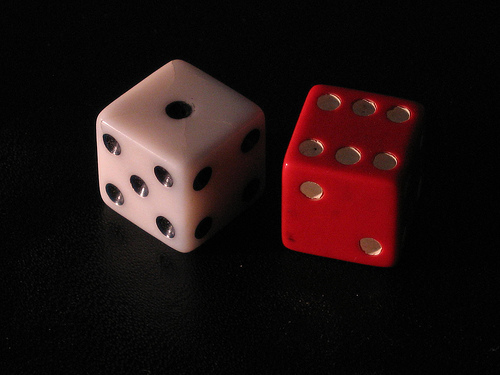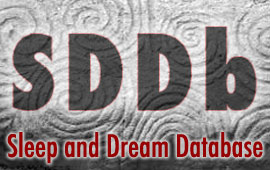 The Sleep and Dream Database has just added a new series of dreams to its collection, thanks to the generosity of Robert Bosnak. In his 1996 book Tracks in the Wilderness of Dreaming he included an appendix with a series of 51 dreams recorded during a seven-week period of travel and personal transition. With his permission I have transcribed and uploaded this series into the SDDb, where it can be found under the survey label “RB Journal 1996.”
The Sleep and Dream Database has just added a new series of dreams to its collection, thanks to the generosity of Robert Bosnak. In his 1996 book Tracks in the Wilderness of Dreaming he included an appendix with a series of 51 dreams recorded during a seven-week period of travel and personal transition. With his permission I have transcribed and uploaded this series into the SDDb, where it can be found under the survey label “RB Journal 1996.”
This is a fascinating and valuable series of dreams for a number of reasons. It was recorded by a Jungian analyst with extensive training and professional experience in dream analysis, and it was recorded during a time of significant changes in his waking life. I have known Robbie for nearly 25 years now, since the Chicago conference of the Association for the Study of Dreams in 1990, and I consider him a good friend and colleague. So it is no easy task to bracket out my familiarity with his life and pretend to study the word usage frequencies of his dreams “blindly.” Nevertheless, here’s what strikes me in comparing the RB Dreams 1996 to the SDDb male baselines, focusing exclusively on the numerical results and what I’ve learned from past studies:
By my count, this series of 51 dream reports has 7469 total words, for an average of about 150 words per report.
Most of the reports (35) are between 50 and 300 words in length. Twelve reports have 49 words or less; the shortest report is 13 words. Four reports have 301 words or more; the longest report is 731 words.
I performed word searches on the whole series of 51 reports for the 7 classes and 40 categories in the SDDb template, and compared the results with the Male MRD Baseline frequencies for reports of 50-300 words. It’s not a perfect apples-to-apples comparison, so the results should be viewed as suggestive rather than definitive.
You can see a google docs spreadsheet of the results here.
The RB dreams have higher frequencies of descriptive perceptual words for intensity, colors, and aesthetic evaluation, along with a slightly higher proportion of vision-related words. This could be a product of the dreamer’s reporting style and post-awakening literary editing of the reports. It could also reflect dream experiences of unusual sensory richness and detail.
There is no more fear in RB’s dreams than in the baselines, which would seem to rule out any unusual stressors or anxieties in waking life. (The low falling frequency may also point in that direction.) The high proportion of happiness-related words really jumps out—I’m not sure I’ve seen a series before with more happiness than fear. The relatively high number of sadness references suggests sensitivity to loss and mourning.
The relatively low number of awareness-related words could be another product of reporting style, and it could also reflect a greater focus while dreaming on relational process rather than cognitive analysis.
The RB dreams have more references to flying than falling, which reverses the pattern I typically see in other dream series (more falling than flying).
The high proportions of speech, family characters, and friendly social interactions all point to a person who is actively and productively engaged with other people in waking life. He seems closely involved with several immediate family members: His wife, daughter, son, brother, mother, and father.
The very high frequency of sexual references could reflect a greater degree of honesty in RB’s reporting compared to the baselines, and it could also indicate the significance of sexual activity and thoughts in waking life.
The high number of fantastic beings suggests someone with a lively imagination, perhaps familiar with video games or fantasy fiction. A somewhat high proportion of Christianity words may reflect someone who knows Christian culture fairly well but is not an active practitioner of the faith.
Several features of these dreams—the high intensity, colors, happiness, flying, fantastic beings—make me wonder if this set includes at least a few reports of mystical dreams with unusual spiritual or existential meaning.
So how do these quasi-blind inferences fare once I explicitly take into account the facts that the dreamer is a successful psychotherapist who says, “I consider it to be a series in connection with the death of my father and a feeling of loss of soul”?
Not perfectly, that’s for sure. I would not have predicted this was a series relating to the death of his father, based only on these word usage frequencies. He does not use father-related words more than other family members, and the death references do not directly indicate his father has died. There are 3 references to ghosts, but not explicitly to the ghost of his father.
I could be missing something, but at this level of analysis the manifest content of this series does not reflect the dreamer’s felt experience of the dreams.
However, the relatively high sadness frequency may pick up on this theme. And the mystical themes I noted may underscore the sense of deep transformation he felt was happening during this period of time. In that sense, the dreams may accurately reflect not the death itself, but the psychological consequences of the death, the still-rippling impact of his father’s loss on his experience of the world.
Again, I wouldn’t have come up with any of that just from looking at the statistical frequencies. But knowing this series came during a period of mourning, I can see where the waking-dreaming connections emerge, and I’ll be curious to see if future studies discover similar patterns with people who have recently lost a close loved one.
Knowing that Bosnak is a psychotherapist with a successful practice makes sense of many features of his dreams—the high speech, friendly social interactions, happiness, and low physical aggression. The high frequency of sexual references may relate to his professional work, and so might the unusual detail of his perceptual descriptions, indicating well-honed observation skills.
In chapter 8 of his book Bosnak describes his understanding of these dreams, which goes into much greater depth than a strictly quantitative method can provide. His goal is to teach readers how to explore the deeper patterns of their own dream series. I highly recommend that chapter, and Bosnak’s work in general, as an excellent resource in learning how to study large collections of dreams.
Transcription note: To conform to current SDDb upload specifications, I made the following changes to the dream reports as presented in Bosnak’s book: I removed all quotation marks, dashes, and italics, condensed each report into a single paragraph, and added the location of the dream and number in the series to start each report. Some degree of meaning is lost with these changes.
 1. The most evil type of man is the man who, in his waking hours, has the qualities we find in his dream state.
1. The most evil type of man is the man who, in his waking hours, has the qualities we find in his dream state.




